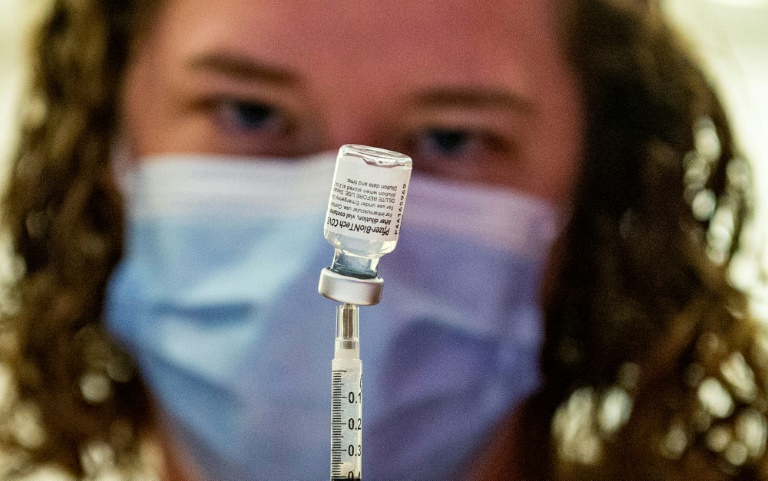A medical worker prepares the Pfizer-BioNTech Covid-19 vaccine booster to be given to children 12-15 years old at a hospital in Hartford, Connecticut
Barring the emergence of drastically different variants, Covid boosters will likely be recommended annually in a similar manner to influenza vaccines, US health officials said Tuesday.
The announcement came after the Food and Drug Administration last week authorized updated bivalent shots against both the original strain of the coronavirus and the BA.4 and BA.5 lineages of the Omicron variant, which are predominant.
“We likely are moving towards a path with a vaccination cadence similar to that of the annual influenza vaccine, with annual updated Covid-19 shots matched to the currently circulating strains,” President Joe Biden’s chief medical advisor Anthony Fauci told reporters.
However, the elderly and immunocompromised may require more frequent shots — and the annual strategy would have to be reviewed in case of a “curveball” such as a dangerous new variant that differs dramatically from predictions.
Ashish Jha, the White House Covid coordinator, added the message was “simple” — if you are 12 or older, and have been previously vaccinated, now is the time to get boosted.
If you were recently infected or vaccinated, “it’s reasonable to wait a few months,” he added.
People can get their Covid booster at the same time as the flu booster, he said. “I really believe this is why God gave us two arms, one for the flu shot and the other one for the Covid shot.”
Officials expect millions of people to receive their bivalent boosters, made by Pfizer and Moderna, in the month of September, and are focused especially on people aged 50 and up.
Centers for Disease Control and Prevention director Rochelle Walenksky said projections showed that uptake of Covid boosters at rates similar to annual flu coverage could prevent as many as 100,000 hospitalizations and 9,000 deaths.
The updated vaccines were recommended by the CDC last week on the basis of favorable animal data, which showed they produced a greater immune response and lowered levels of the virus in the lungs, compared to older shots.
The Omicron variant BA.4 and BA.5 lineages comprise 99 percent of circulating coronavirus in the United States and are predicted to continue to dominate this fall and winter.









